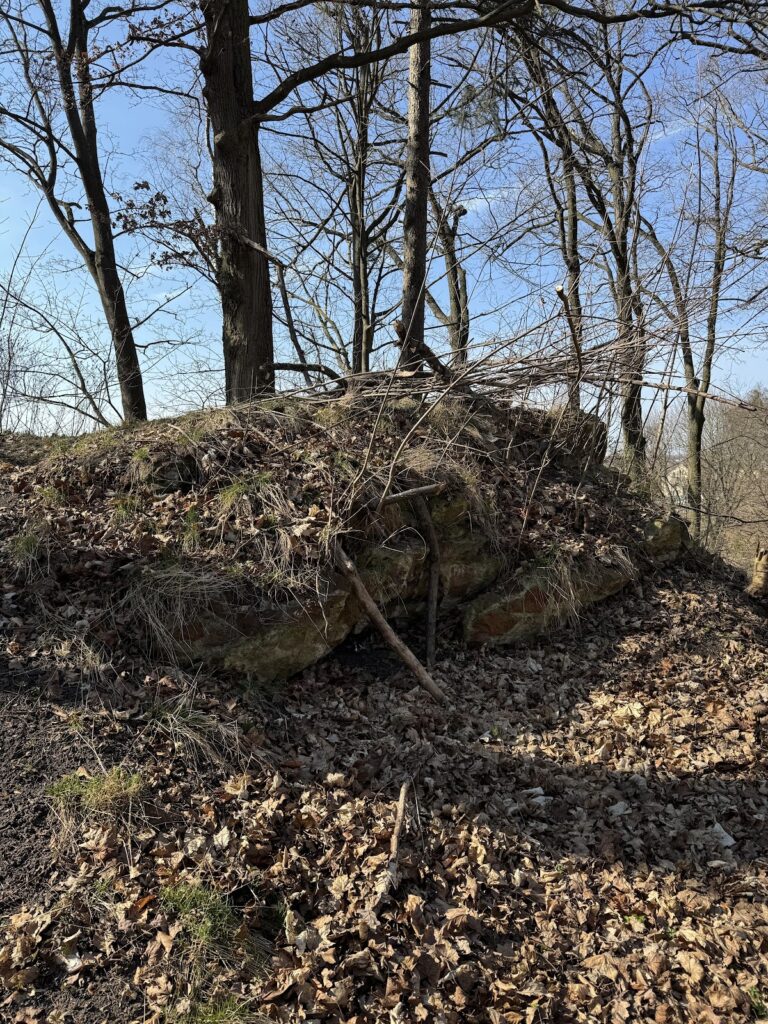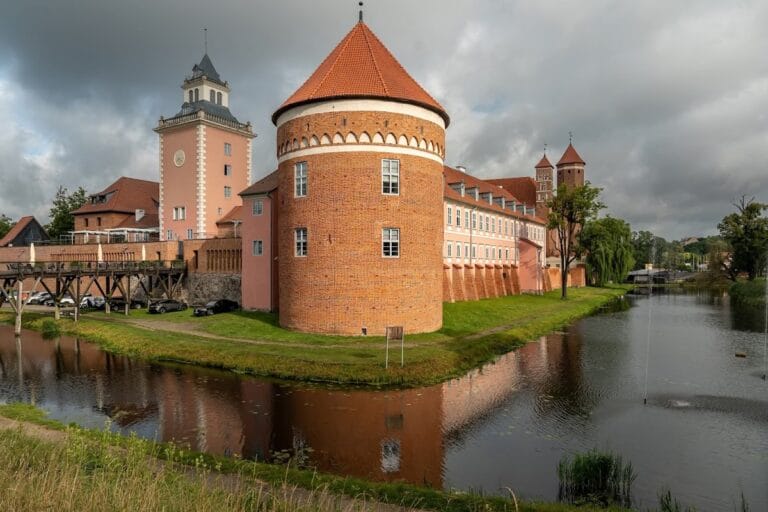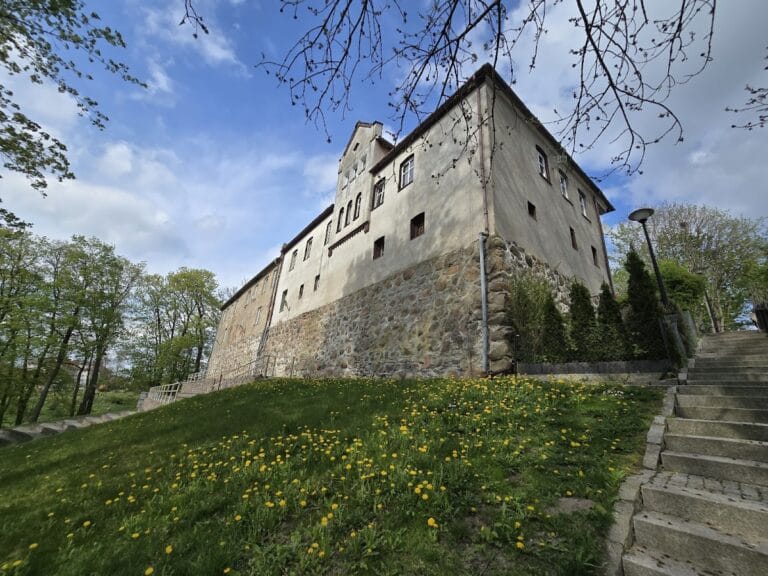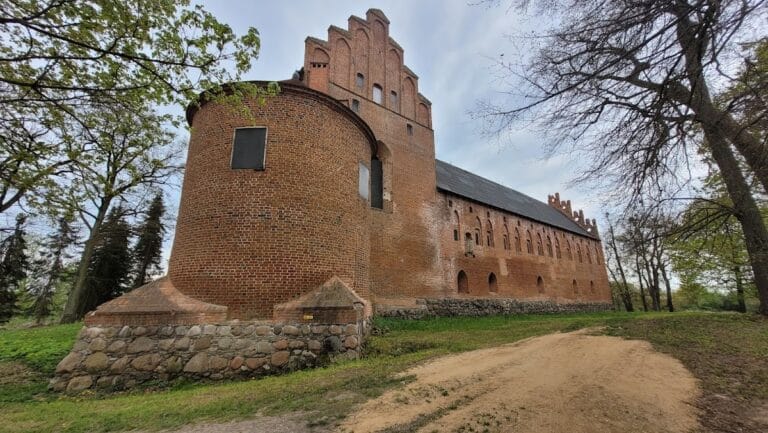Zamek w Bartoszycach: A Historic Teutonic Castle in Poland
Visitor Information
Google Rating: 4
Popularity: Very Low
Google Maps: View on Google Maps
Country: Poland
Civilization: Unclassified
Remains: Military
History
Zamek w Bartoszycach is located in the town of Bartoszyce, Poland. The site originated as a fortified settlement of the Bartowie tribe, who inhabited the region of Barcja along a bend of the Łyna River. This area witnessed early efforts at Christianization by Poland, which did not succeed initially. Subsequently, the Teutonic Order was invited to the region and took control of Barcja, establishing a wooden-earth fortress on the hill overlooking the river in 1240. This fortress was among the earliest Teutonic strongholds in Prussia.
The castle, originally named Bartenstein—which roughly means “stone” or “fortified settlement” in the local language—was a key point for holding territory. In 1264, it fell temporarily to Prussian rebels during a regional uprising, only to be recaptured by the Knights. However, a destructive fire in 1273 left the castle in ruins. Following this, the fortress was rebuilt incorporating stone elements, marking a shift from the earlier solely wooden and earth construction.
By the early 14th century, the settlement around the castle had grown, receiving town privileges in 1326. Originally called Rosenthal, the town was moved to the opposite bank of the Łyna River in 1332 and renamed Bartenstein by Grand Master Luther von Braunschweig. Although the castle remained important as a local administrative center, housing a Teutonic procurator subordinate to the commander of Bałga, its military role was quite limited. An inventory from 1412 recorded only four artillery pieces within the castle, suggesting a modest defensive presence.
In 1440, the citizens of Bartoszyce joined the Prussian Confederation, a coalition opposing the Teutonic Order’s control. However, divisions within the community caused them to withdraw from the alliance six years later. Further unrest culminated in 1454 when the townspeople destroyed the castle entirely during renewed conflicts. The castle was never reconstructed in its original form thereafter, although parts of its ruins and foundations remained under the ownership of the Prussian dukes for centuries.
Later, a residence known as a ducal starosty was likely built atop the castle’s foundations, serving administrative functions. In the early 20th century, specifically from 1902, the castle site became the location for the county’s administrative building, replacing the earlier structures. This new building was destroyed by fire in 1945 amid World War II fighting and was never rebuilt. Today, the area of the former castle includes a wooded park and a nearby recreational park, with modern plans aiming to uncover and partially restore the castle’s foundation outlines and defensive walls.
Remains
The original fortress constructed in 1240 combined wood and earthworks, built strategically atop a hill on the left bank of the Łyna River. It utilized the defensive advantages of natural elevation and earlier fortifications established by the Bartowie tribe before the Teutonic Knights’ arrival. After the fire in 1273, the castle was reconstructed with stone elements, indicating an evolution towards more durable building materials that reflected changing military and administrative needs.
A copperplate engraving made in 1684 by Krzysztof Hartknoch shows the castle situated on a large hill within a river bend. The depiction indicates the castle comprised two separate sections divided by an internal moat. However, since this image was created over two centuries after the castle’s destruction, it serves only as a partial visual record rather than a precise architectural plan.
Today, the foundations of the castle remain buried beneath what is now a wooded park area. Archaeological studies and local redevelopment initiatives between 2007 and 2013 have demonstrated the possibility of excavating these foundations and partially reconstructing the defensive walls. While no specific architectural details such as inscriptions or decorative elements have been documented, the surviving foundational layout offers valuable insight into the site’s historical footprint.
Following the castle’s destruction and abandonment, later structures were built upon its base, including a ducal starosty residence whose exact form is not detailed in the historical record. In modern times, administrative buildings erected on the site further altered the landscape before being lost to fire during mid-20th-century conflicts. The current park preserves the spatial memory of the stronghold, with its buried remains underlining the layers of history embedded in the location.







